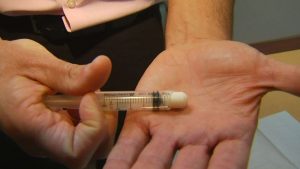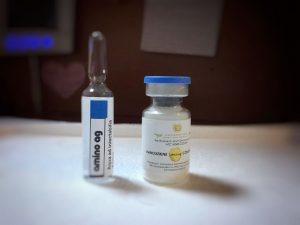
Effective and reliable treatments that prevent relapse after addiction detoxification are essential. In this regard, needles and pellets are an important treatment option.

Naltrexone implants, known as addiction chip devices, contain naltrexone and are administered subcutaneously. Naltrexone is an opioid antagonist that blocks the effects of opioids and reduces cravings. Naltrexone has a low abuse potential. Due to problems with oral naltrexone use and discontinuation of treatment, long-acting, slow-release naltrexone implants, also known as pellets, have been developed. The naltrexone implant is administered subcutaneously 7-10 days after the last opioid or alcohol use.
Naltrexone implants, known as addiction chip devices, contain naltrexone and are administered subcutaneously. Naltrexone is an opioid antagonist that blocks the effects of opioids and reduces cravings. Naltrexone has a low abuse potential. Due to problems with oral naltrexone use and discontinuation of treatment, long-acting, slow-release naltrexone implants, also known as pellets, have been developed. The naltrexone implant is administered subcutaneously 7-10 days after the last opioid or alcohol use.

Nalmefene Consta depot injection is a long-acting injection therapy. It is a treatment for opioid (heroin, codeine, bubrenorphine, methadone, oxycodone etc.) addicts to prevent relapse to opioid use after detoxification treatment. Nalmefene Consta works by blocking the receptors to which opioids bind in the brain after opioid addicted patients take opioids. This binding prevents the pleasurable effects of opioids.
With Nalmefene Consta depot injection therapy, patients stay clean for a long time. As such, continuity in treatment is ensured and the person can be successful in treatment with psychological support programs. As a result of these treatments, the desire to use substances decreases. Nalmefene Consta depot injection is available in doses with a duration of action of 3, 6 and 12 months.
Naltrexone depot injection is a long-acting depot injection that lasts up to four weeks. Naltrexone works by blocking the places in the brain where opioids (heroin, codeine, bubrenorphine, methadone, oxycodone, etc.) bind to produce their effects. Since the pleasurable effects are stopped, it causes the person to stay away from addictive opioid substances for a long time. Because it reduces the craving for the substance and keeps the person clean for a long time, it allows the person to recover from opioid addiction. Although there are also Naltrexone tablets that can be taken orally, the injection form is more effective.

Vanoxerine Consta (Vanoxerine extended-release injection) is used in our clinic as an effective option in the treatment of cocaine addiction. Cocaine is a very addictive substance. Cocaine rapidly and briefly elevates dopamine in the brain circuits that control pleasure and movement, leading to addiction. Vanoxerine, on the other hand, causes a slow, long-lasting, moderate increase in dopamine. At the same time, vanoxerine weakens the addictive effect of cocaine, which further increases dopamine levels. Vanoxerine depot injections begin immediately after injection, preventing cocaine from affecting the addicted individual. Furthermore, unlike cocaine, vanoxerine does not have an addictive pleasure effect. Studies have shown that vanoxerine helps patients maintain consistent sobriety and prevents relapses in addicts. The drug is also well-tolerated and safe. In our clinic, Vanoxerin Consta is available and used in doses effective for 3 months, 6 months, and 12 months. Prior to Vanoxerin Consta Injection Treatment, the addicted patient is evaluated by psychiatrists at Pembe Köşk Psychiatric Hospital, with the patient’s prior consent. Urine analysis must be free of cocaine. If no cocaine is detected in the urine, a trial dose of tablets is administered, and an efficacy check lasts approximately 30 minutes. Following these procedures, the injection is administered. At our hospital, Vanoxerin Consta is administered as an intramuscular depot injection in 3-month intervals, and treatment is generally planned for one year.
